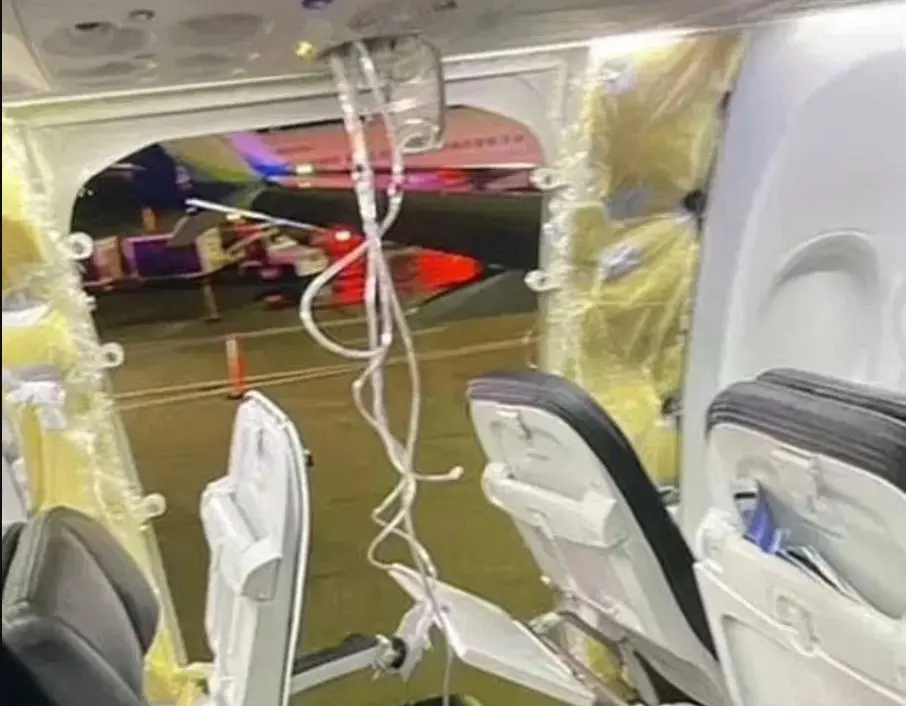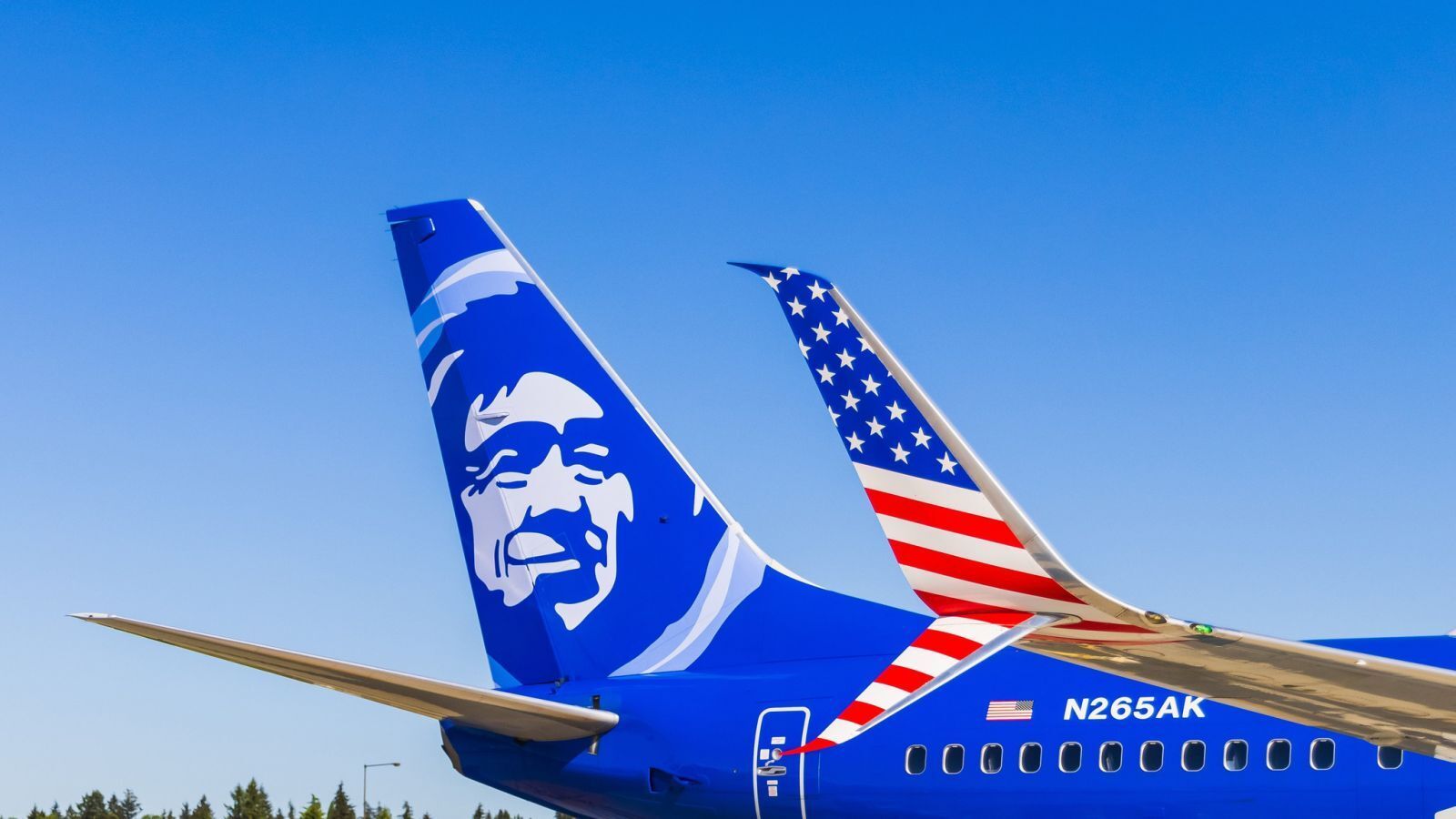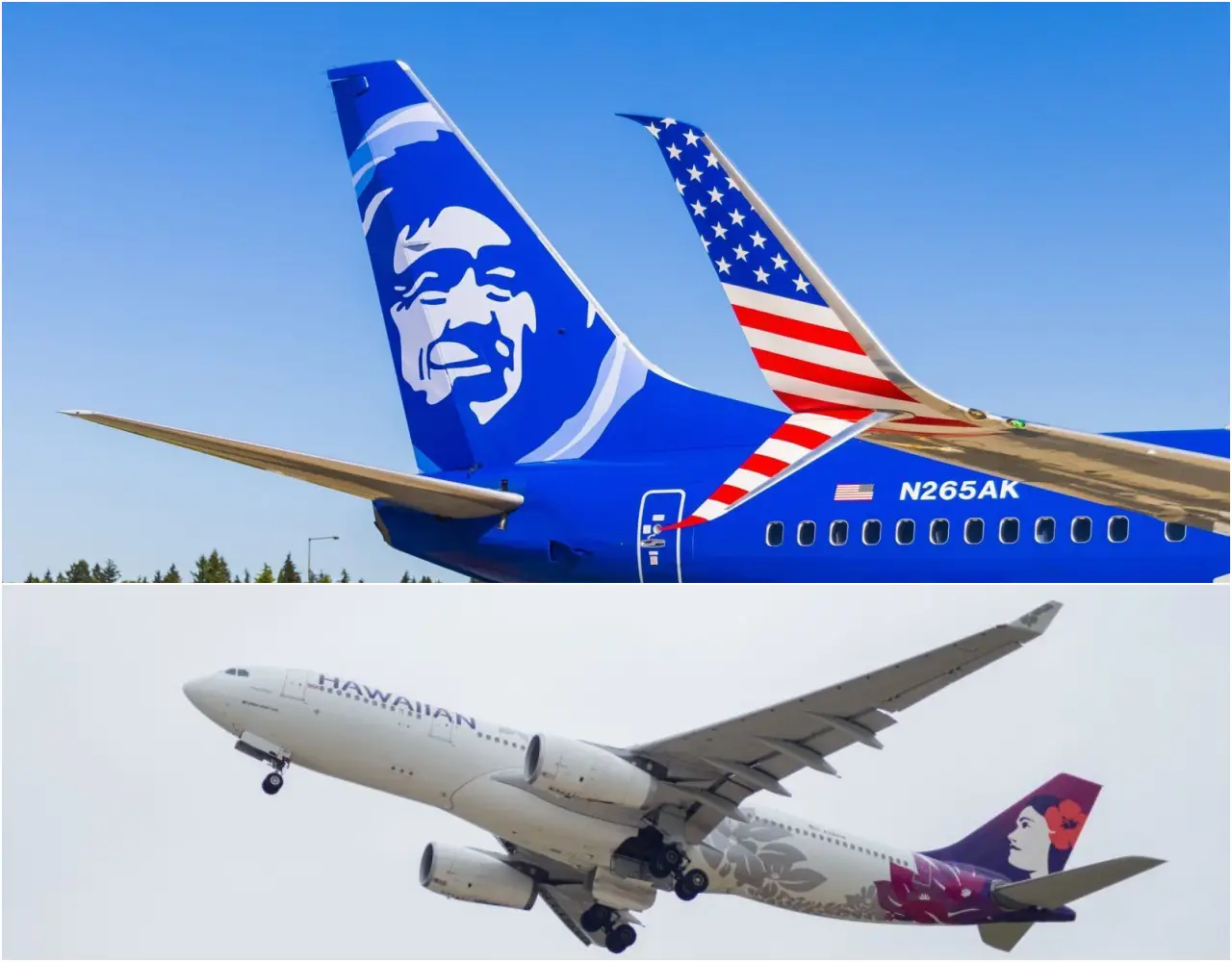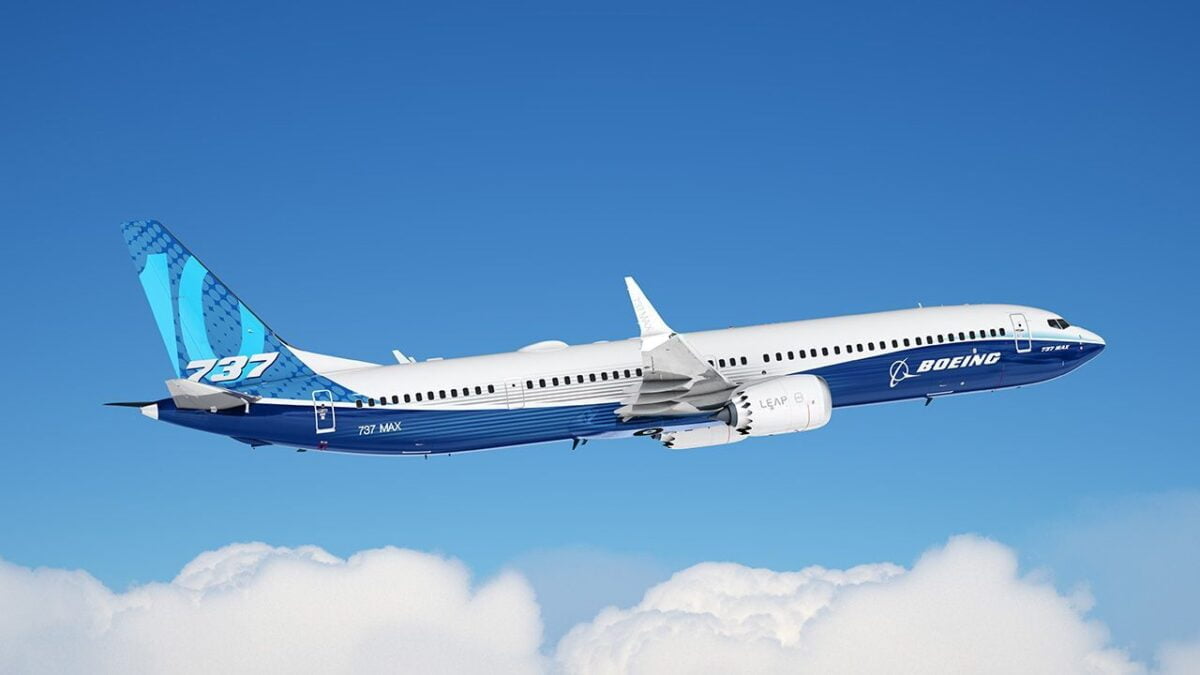Alaska Airlines has grounded its entire fleet of Boeing 737 Max 9 jets following an emergency landing incident. The airline’s decision came after Flight 1282, en route to Ontario, California, encountered a severe midair pressure issue that resulted in part of the fuselage being blown out. This emergency, necessitating a prompt return to Portland International Airport, has reignited concerns over the safety of this particular aircraft model, previously under scrutiny for its safety record.
Alaska Airlines Flight 1282, carrying 171 passengers and six crew members, experienced a midair pressure problem shortly after takeoff from Portland International Airport. This alarming situation resulted in a chunk of the fuselage being blown out, forcing the aircraft to make an emergency landing back at the Portland airport. The swift response by the flight crew ensured a safe landing, but the incident left passengers shaken and raised questions about the aircraft’s safety.
@cbsnews An #AlaskaAirlines flight traveling from Portland, Oregon, to Ontario, California, had to make an #emergencylanding Friday night after a portion of the aircraft blew out mid-air. Video obtained by CBS News appeared to show that one of the passenger window panels had been blown out. #news #plane #aviation ♬ original sound – cbsnews
Despite being ranked as the 10th safest airline in the world, Alaska Airlines announced the grounding of all 65 of its Boeing 737 Max 9 aircraft, which constitute about a fifth of its fleet. The airline stated that this precautionary measure was to allow for thorough inspections of each plane, expected to be completed within a few days. This decision reflects the airline’s commitment to passenger safety, even as it disrupts its flight operations. However, it raises the question: how might this incident affect the airline’s safety ratings in the coming year?
The Boeing 737 Max series has a troubled history, marred by two fatal crashes of the Max 8 model in 2018 and 2019, which led to the worldwide grounding of the Max series. Although Boeing made significant changes to the aircraft, including its flight control system, and received clearance from the Federal Aviation Administration (FAA) to resume flights in late 2020, incidents like this continue to impact the public’s confidence in the aircraft.
Passengers aboard Flight 1282 described the emergency landing as a harrowing experience. The sudden decompression in the cabin resulted in oxygen masks being deployed, and a gaping hole in the fuselage exposed passengers to the night sky and city lights below. The crew reported a “pressurization issue” before the emergency landing, and the Association of Flight Attendants at Alaska Airlines described the decompression as “explosive.
Vi Nguyen, a passenger on the flight, recounted waking up to a loud sound and seeing a large hole in the side of the aircraft. Her friend, Elizabeth Le, also described hearing an “extremely loud pop” and seeing the hole in the plane’s wall, reported the New York Times. The incident was not only terrifying for those on board but also highlighted the potential risks associated with air travel, particularly concerning the Boeing 737 Max 9 model.
The Federal Aviation Administration, the National Transportation Safety Board, and representatives from Alaska Airlines and Boeing are investigating the cause of the midair problem. This investigation is crucial for understanding what went wrong and ensuring the safety of future flights.
Boeing’s statement following the incident indicated their awareness and involvement in gathering more information. The company’s response and cooperation in the investigation are vital, given the previous controversies surrounding the 737 Max series.
The grounding of Alaska Airlines’ Boeing 737 Max 9 fleet is a significant development in the aviation industry, reflecting ongoing concerns about the safety of these aircraft. As investigations continue, the aviation community and the public await answers that could have far-reaching implications for the future of the Boeing 737 Max series.











